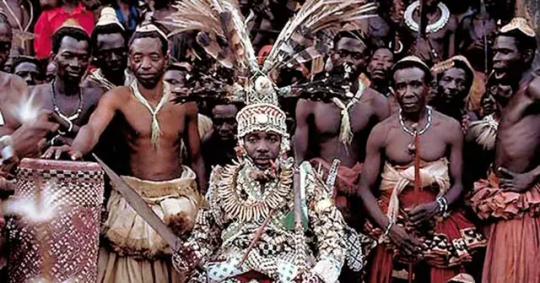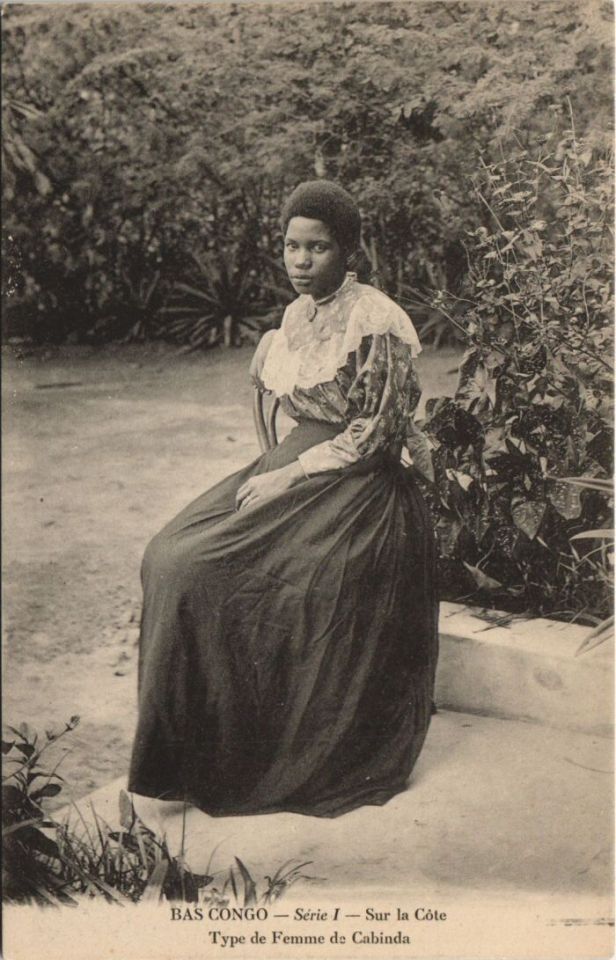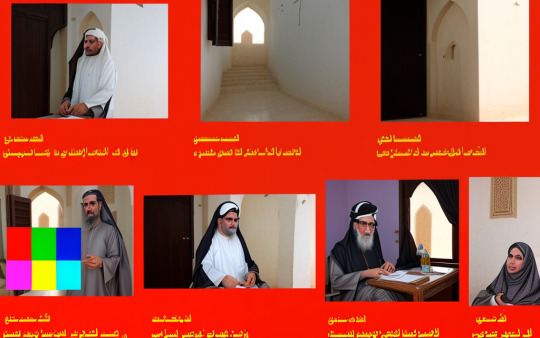#cabinda
Text

Bakongo (also known as Mkongo or Mukongo). In one of the Bantu languages, Kongo, the word “Ba” means “People” while “Kongo” according to an adventure means “Hunter” while according to others it means “Gathering” or “Mountains”. There is yet to a decisive context for it. Even the term “Congo” was a term used to refer to black people who spoke “Kikongo” in Cuba, America. The Bakongo people speak Kinkongo language which also compromises of 9 other language variations for different sub-branches of the Bantu tree; for example the Kivil dialect by the north coast, the Kisansolo in the central dialect, amongst others.
The 13th – 14th century saw the creation, transition, and building of the great Kingdom of Kongo. The kingdom succession was based on voting by the noble of the land which kept the king’s lineage among royalty. In the late 14th century, what was supposed to be a quick stop for the portugese

Allegedly, the Portuguese were in search of a route to India for opportunities when one Diego Cao found the river Congo. Moving south he and his companions found the people of Kongo in an organized system; valuable currency, trading relations, transport infrastructure, port settlements, and open-minded people.
The people of Kongo accepted them and even the king willingly accepted Christianity in a show of solidarity with these new people. Once a man, Chief Muanda, warned the people of the coming doom of slavery of the Bakugo clan which will destroy the kingdom, he said it will begin with the visitation of foreigners but people choose what they want to see even though he was later right. By the 19th century; the Kingdom of Kongo had completely fallen, the Bakongo people had fully divided and spread across different parts of the continent.
The Bankongo people are the third-largest group in Angola but in the 17th century, they lost a war to Portuguese during the repression. They moved throughout the continent occupying the northern regions of places like Cabinda, Congo, Angola and Zaire. In the 20th century, the Bakongo created a political party called the Union of Angolan Peoples (UPA) in an attempt to bring back all the Bakongo people, eventually, they decided an independent country filled with different tribes was much better for their society. Soon after that decision, they fought along the Ovimbundu and the Mbundu people for a better Angola.
In 1975, Angola gained its independence with a lot of Bakongo people being the faces for the win but as soon as the Mbundu people took over the ruling power there was discrimination among all three tribes. In the present time, their largest numbers are in Congo and though they’ve been through a lot, they have kept some of their cultural practices.
10 notes
·
View notes
Text

Woman from Cabinda, modern-day Angola
French vintage postcard
#day#historic#woman#photo#briefkaart#vintage#modern#modern-day#sepia#photography#carte postale#postcard#postkarte#cabinda#postal#tarjeta#ansichtskarte#french#old#ephemera#postkaart#angola
6 notes
·
View notes
Photo

escravo africano da nação cabinda, rio de janeiro, 1860-1870, christiano junior.
6 notes
·
View notes
Text
I do enjoy when my students inadvertently teach me something new.
Today my seventh graders were doing a geography scavenger hunt activity (using world maps to find places that meet certain criteria). One of the questions called for three countries that each had three letter A's in their names, which produced some interesting responses; I had to remind multiple students that Alaska was not an independent country, and that Antarctica had no permanent human population. I also had to remind many to actually count the As in a name, rather than jumping to conclusions because there were more than one.
One kid asked me to look at her answers, and I saw the word "Cabinda," a name that sparked absolutely no recognition in me, and which I assumed was a typo. I asked her to show me where Cabinda was on the map. Sure enough, it was right there on the Atlantic coast of central Africa, where I had simply never noticed it, despite the fact that it's clearly present and labeled on several of the maps and globes I've kept in my classroom for years.
Of course, I had to immediately point out to this student that Cabinda did not fit the requirements for the scavenger hunt item, since it is not an independent country but an exclave of Angola, and also its name clearly contains only two As. The student was devastated, but hopefully in a good way? Now we both know where Cabinda is, and that it is part of Angola.
3 notes
·
View notes
Video
youtube
Yannick Afroman - Bakongo ft. Sam Mangwana, Socorro, Kyaku Kyadaff, Gilmário Vemba
#youtube#Yannick Afroman - Bakongo ft. Sam Mangwana Socorro Kyaku Kyadaff Gilmário Vemba#Yannick Afroman#Yannick Afroman - Bakongo#Bakongo#Angola#Cabinda#DRC#CONGO#KONGO#Music
0 notes
Text

L’assenza di giustizia e diritto conduce all’inerzia. Quindi, migliorate le vostre azioni e condotta, e prestate attenzione alla voce di Cabinda. Non ci sarà clemenza per il male inflitto. Il FLEC esiste perché Cabinda non appartiene all’Angola.
Viva Cabinda libera!
Viva FLEC!
Lubendo Pancracio Bungo il generale ☆☆☆☆☆☆☆
0 notes
Text
Exporter of Flash Dryer in Angola

Drytech Engineering Systems is an Exporter of Flash Dryer in Angola.
We are a Manufacturer, Supplier, Stockiest, and Exporter of Flash Dryers, Spray Dryers, Spin Flash Dryers,
Fluid Bed Dryers, and Evaporator Dryers, Rotary Valves, Rotary Atomizers, Hot Air Generators,
Centrifugal Blowers, and Dust Collector Systems.
Drytech Engineering Systems is Based in Ahmedabad, Gujarat, India.
we are dedicated to providing top-of-the-line drying solutions that enhance productivity and efficiency across various industries.
With years of expertise and a commitment to innovation, we design our flash dryers to meet the unique requirements of your operations, ensuring optimal performance and reliability.
A flash dryer is an industrial equipment used to rapidly dry materials with high moisture content.
This method involves dispersing the material into a hot air stream, which quickly evaporates the moisture, leaving behind dry, free-flowing particles.
Industries such as food processing, pharmaceuticals, chemicals, and minerals widely use flash dryers due to their efficiency and cost-effectiveness.
Features:
High Efficiency: We engineer our flash dryers for maximum efficiency, ensuring rapid drying times and low energy consumption.
This efficiency translates into cost savings and increased productivity for your operations.
Customizable Solutions: We understand that each industry has unique requirements. We can customize our flash dryers to meet the specific needs of your process, including adjustments in drying temperature, air flow, and material handling.
Advanced Control Systems: Equipped with state-of-the-art control systems, our flash dryers offer precise control over drying parameters.
This ensures consistent product quality and allows for easy monitoring and adjustments.
Drytech Engineering Systems is an Exporter of Flash Dryer in Angola including locations like Cabinda, Bengo, Benguela, Bie, Cabinda, Cuando Cubango, Cuanza Norte, Cuanza Sul, Cunene, Huambo, Huila, Luanda, Lunda Norte, Lunda Sul, Malanje, Moxico, Namibe, Uige, Zaire, Lobito, Benguela, Lubango, Cabinda, Kuito, Malanje, Namibe, Soyo, Uige, Menongue, Sumbe, dalatando, Ondjiva.
For detailed information and inquiries, please feel free to contact us.
View Product: Click Here
Read the full article
#Ahmedabad#andDustCollectorSystems#andEvaporatorDryers#Angola#Bengo#Benguela#Bie#Cabinda#CentrifugalBlowers#CuandoCubango#CuanzaNorte#CuanzaSul#Cunene#dalatando#DrytechEngineeringSystems#Exporter#ExporterofFlashDryer#ExporterofFlashDryerinAngola#FlashDryerinAngola#FlashDryers#FluidBedDryers#Gujarat#HotAirGenerators#Huambo#Huila#India#Kuito#Lobito#Luanda#Lubango
0 notes
Text

Anthony Fineran, Grey Vault Cabinda, 2024
1 note
·
View note
Text
Muamar (5)
Fue en los acuerdos de Lancaster House en 2010, donde el Reino Unido y Francia se comprometieron en acabar con la Jamahiriya (Estado Libio). También se comprometieron a, entre bomberos, no pisarse la manguera, o sea, la vuelta del colonialismo más rancio y en base a lo estipulado en la Conferencia de Berlín de 1885. Todo el noroeste de África, los países a los que imponen el franco CFA mientras…

View On WordPress
#Angola#Bengassi#Cabinda#Ciudad del Cabo#Conferencia de Berlín#El Cairo#El Congo belga#ENI#Francia#Frente de liberación de Cabinda#Hillary Clinton#Inglaterra#Irak#Jamahiriya#João Lourenço#Lagos#Libia#Lockerbie#Nigeria#OTAN#Paolo Gentiloni#Sidney Bluementhal#SONANGOL#Teikoku#TOTAL#Tripoli#Zaire
0 notes
Link
O influxo de cultos africanos como Ifá e RTY causou uma agitação no Rio Grande do Sul. O Batuque tradicional, que tem sido parte integrante da cultura do Estado, foi espezinhado por estas novas práticas religiosas. O nosso povo pergunta-se o que fazer com esta mudança cultural. Num episódio recente, tivemos Pai Mario de Oxalá, Baba Hendrix de Oxala e Nana de Demum que se juntaram a nós para discutir esta questão polarizadora. Como especialistas nas suas respectivas religiões, ofereceram-nos uma visão da história e do significado do Ifá e da RTY, ao mesmo tempo que abordaram as preocupações levantadas por aqueles que têm o Batuque como querido. ________________________________________ Gostou de um episódio e do tema abordado? Nos de esse feedback
Nos siga no instagram @RedeBatuqueRS CONHEÇA NOSSOS CURSOS E APOSTILAS htttps://cursos.batuquers.com.br --- Send in a voice message: https://podcasters.spotify.com/pod/show/batucast/message
0 notes
Text
Please reblog for a bigger sample size!
If you have any fun fact about Angola, please tell us and I'll reblog it!
Be respectful in your comments. You can criticize a government without offending its people.
43 notes
·
View notes
Video
youtube
Yannick Afroman, Nagrelha - Não É Só No Bairro
#youtube#Yannick Afroma#Nagrelha#Não É Só No Bairro#Yannick Afroman Nagrelha - Não É Só No Bairro#usic#AANGOLA#CABINDA
0 notes
Text

I figli del maligno prosperano in questo mondo? Non bisogna lasciarsi sconvolgere dalla presenza del male che regna nel mondo; bisogna sopportare ed essere fiduciosi nella giustizia. Gli operatori di iniquità non avranno successo, mentre i giusti trionferanno.
Viva Cabinda libera!
Viva FLEC!
Cabinda non è l'Angola!
0 notes
Text
Click the Title Link to DOWNLOAD for Free from the BLACK TRUEBRARY

Click the Title Link to DOWNLOAD for Free from the BLACK TRUEBRARY
Outside of Cuba, Palo is generally called Palo Mayombe ; however, this is a misnomer since not all lineages and houses are truly Mayombe – in fact, most are not. To my knowledge there is only one (perhaps a couple) Munanzo outside of Cuba that are accepted as a true Mayombe houses amongst the elders on the Island.

In Cuba, “Palo Monte” is used far more frequently to speak to the entire body of Regla-Kongo Palo tradition. Other terms such as Palo Cruzado (‘crossed palo’, denoting heavy syncretization with other religions), Palo Cristiano (‘Christian palo’) and Palo Judio (‘Jewish palo’, not actually jewish, but simply non-Christian) deserve a brief mention. However, these are not specific ramas of Palo, but rather terms that are used to denote the degree of syncretism and mixing in individual lineages and practices.
There are many houses (munansos) and foundational lineages (ramas) of Palo Monte, but commonly they are understood to fit within three major forms or sub ‘reglas’ within the greater Regla-Kongo:
Mayombe
Biyumba (Vrillumba o Brillumba)
Kimbiza
Palo Mayombe is the oldest and most orthodox form of Palo. The origins trace back to a specific Nkisi cult in the Mayombe region of Cabinda (NW Congo) from where it gets its name and the tradition came into its own in the caves and wilderness of the Pinar del Rio highlands of Cuba. Mayomberos typically shun away from syncretism and are extremely orthodox in our practices. The most well known of the Mayombe houses are the houses of “Batalla Saca Empeño” and “Bejuco Nfinda”.
Palo Biyumba developed out of Palo Mayombe and rose in popularity during Cuba’s war of Independence. It was the first regla to initiate people of non-Bantu ancestry and frequently worked with and developed pacts with dead spirits of no particular blood or spiritual lineage (often times to send them out for warring intentions). It is a vast regla and has many ramas and sub-lineages. Indeed, a great number of houses today are some offshoot of Biyumba. Broadly speaking, Palo Biyumba is more oriented toward the various mpungos and over time some lineages have introduced a degree of syncretization with elements of Ocha and Catholicism.
Palo Kimbisa was popular on the eastern side of the Cuban island and has absorbed many influences from Catholicism to Freemasonry to Haitian Vodou. Kimbisa likely originated within an already syncretized Catholic-Kongo religious tradition from the Kingdom of Kongo following Kimpa Vita’s Christian reform in the 18th C. In Kimbisa the mpungos are paramount and are seen as divinities and saints. Thus, Kimbiseros will venerate the mpungos and focus much of their work calling upon them, instead of upon the dead. The most well known Kimbisa rama is Andrés Petit’s La Regla Kimbisa de Santo Cristo del Buen Viaje.
The Kimbisa prendas/ngangas I have seen also tend to be huge in comparison to Mayombe. Although my elders have reassured me that there are Kimbisa prendas that are built almost identical to Mayombe as there is more variance per house/lineage than across the greater sub-reglas. It is also common to see Kimbisa (as well as Briyumba) prendas with crucifixes. Moreover, many Kimbiseros and Biymberos will make a distinction between prendas judias or prendas ndoki(those without crucifixes and containing the bones of non-baptized individuals) used to curse, kill, and other malefica; and prendas cristianas (with cross and baptized nfumbe) used to heal and general benefica. This distinction does not appear in Mayombe.
Assortment of now defunct/dormant Briyumba Ngangas on display in the Museo Municipal de Regla
Click the Title Link to DOWNLOAD for Free from the BLACK TRUEBRARY
12 notes
·
View notes
Note
You know judging by your Tumblr I should realize that you're too ignorant to even be insulted.
You don't have a personality anywhere I thought that was pretty clear but I guess I have to elaborate, maybe you should go back to school, get a job as well or a real life?
Unless tumblr pays you to schizophrenic post like an incel cuck.
The usage of incel cuck is quite old fashioned. Regarding school and job, I am quite happy with my position. You can.say those things to no avail. Now, judging others by their blog, that is the curse of many who conflate social media with reality. Obviously I have no problem in posting this, this is entertainment to me. Anything else? Look you can ask me about my life during the civil war in Angola, or about that that time I was initiated into a black magic cult in Cabinda.
11 notes
·
View notes
